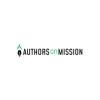
Publishing a book is a major milestone for any author. But with multiple publishing paths available today, choosing the right one can be challenging. Should you go the traditional route with a well-established book publishing company, or is self-publishing a better option? Each approach has its own benefits and drawbacks, and the right choice depends on your goals, budget, and level of involvement in the publishing process.
This blog will break down the differences between traditional and self-publishing, helping you decide which book publishing services align with your needs.
1. Understanding Traditional Publishing
1.1 What Is Traditional Publishing?
Traditional publishing involves working with a book publishing company that handles everything from editing and design to distribution and marketing. Authors typically need to secure a literary agent who pitches their manuscript to publishing houses. If accepted, the publisher covers the costs and manages the book’s production.
1.2 Steps in the Traditional Publishing Process
The process begins with writing and polishing a manuscript, followed by submitting queries to literary agents. If an agent signs an author, they pitch the book to major publishing houses. Once accepted, the book goes through professional editing, cover design, printing, and book marketing strategies before reaching bookstores and online retailers.
1.3 Benefits of Traditional Publishing
- Professional Support: Authors receive assistance from experienced book writing experts in editing, formatting, and marketing.
- Wider Distribution: Books are stocked in major bookstores, libraries, and online platforms.
- Credibility: Getting published by a well-known book publishing company boosts an author’s reputation.
1.4 Challenges of Traditional Publishing
- Slow Process: It can take years to land a publishing deal and see the book in print.
- Loss of Control: The publisher makes decisions on book title, cover, and pricing.
- Lower Royalties: Authors receive only a small percentage of book sales.
2. How Self-Publishing Works
2.1 What Is Self-Publishing?
Self-publishing allows authors to publish their books independently through platforms like Amazon Kindle Direct Publishing (KDP) and IngramSpark. A self publishing company provides the tools and services needed for book production, from editing and cover design to marketing.
2.2 The Self-Publishing Process
Authors write, edit, and format their books before choosing a self publishing company to distribute their work. They have complete control over pricing, marketing, and distribution. Some authors hire book ghostwriting services to help with writing and content development.
2.3 Benefits of Self-Publishing
- Creative Freedom: Authors retain control over every aspect of their book.
- Higher Earnings: Since there’s no middleman, self-published authors keep a larger share of royalties.
- Faster Publishing: Books can be published within weeks instead of years.
2.4 Challenges of Self-Publishing
- Upfront Costs: Authors pay for editing, cover design, and marketing.
- Marketing Responsibility: Without a book publishing company, authors must handle promotion themselves.
- Limited Bookstore Access: Traditional bookstores prefer traditionally published books.
3. Key Differences Between Traditional and Self-Publishing
3.1 Control & Creative Freedom
In traditional publishing, the publisher decides on the book’s title, cover, and content. With self-publishing, authors have complete creative control, even if they use book ghostwriting services for writing support.
3.2 Time to Publish
Traditional publishing can take years, while self-publishing can get a book to market in months. If speed is a priority, working with a self publishing company is the better option.
3.3 Earning Potential & Royalties
Traditional publishers offer lower royalties (10-15%), whereas self-published authors can earn up to 70% per book sale.
3.4 Marketing & Promotion
Traditional publishers provide some book marketing strategies, but authors are still expected to promote their books. Self-published authors handle all marketing or hire professional book marketing services for support.
3.5 Publishing Costs & Investments
Traditional publishers cover all costs, while self-published authors invest in editing, cover design, and marketing through a self publishing company.
3.6 Distribution & Bookstore Access
Traditional publishing offers wider distribution, while self-published books rely on online platforms like Amazon and Barnes & Noble.
4. How to Choose the Right Publishing Option for You
4.1 When Traditional Publishing Is the Best Choice
- You want credibility and industry recognition.
- You prefer a structured process with professional guidance.
- You’re willing to wait for a publishing deal.
4.2 When Self-Publishing Is the Best Choice
- You want full control over your book.
- You’re ready to invest in editing and book marketing services.
- You want to publish quickly.
4.3 Questions to Ask Before Deciding
- How much control do you want over your book?
- What’s your budget for publishing and marketing?
- Are you comfortable managing your own book marketing strategies?
5. Exploring Hybrid Publishing: A Middle Ground
Hybrid publishing blends elements of both models. Authors pay for production but retain higher royalties and creative control. Some book publishing services offer hybrid options to support authors who want professional help without losing independence.
6. Popular Book Publishing Companies to Consider
6.1 Top Traditional Publishing Houses
- Penguin Random House
- HarperCollins
- Simon & Schuster
6.2 Leading Self-Publishing Platforms
- Amazon Kindle Direct Publishing (KDP)
- IngramSpark
- Lulu
6.3 Notable Hybrid Publishing Companies
- She Writes Press
- Greenleaf Book Group
7. Common Myths About Traditional and Self-Publishing
- Myth: Traditional publishing is the only way to be successful.
- Fact: Many self-published authors achieve bestseller status.
- Myth: Self-published books lack quality.
- Fact: Professional book writing experts ensure high-quality self-published books.
8. Case Studies: Success Stories from Both Paths
8.1 Famous Authors Who Chose Traditional Publishing
- J.K. Rowling (Harry Potter)
- Stephen King (The Shining)
8.2 Self-Published Authors Who Became Bestsellers
- Colleen Hoover (It Ends With Us)
- Andy Weir (The Martian)
Conclusion
Choosing between traditional and self-publishing depends on your goals, budget, and level of control you desire. If you want credibility and professional backing, traditional publishing is ideal. However, if you prefer creative freedom, higher royalties, and faster publication, working with a self publishing company is the way to go.
No matter your choice, success in publishing comes down to writing a great book and implementing strong book marketing strategies. If you need expert help, consider working with book writing experts or book ghostwriting services to refine your manuscript and get it ready for publication.

